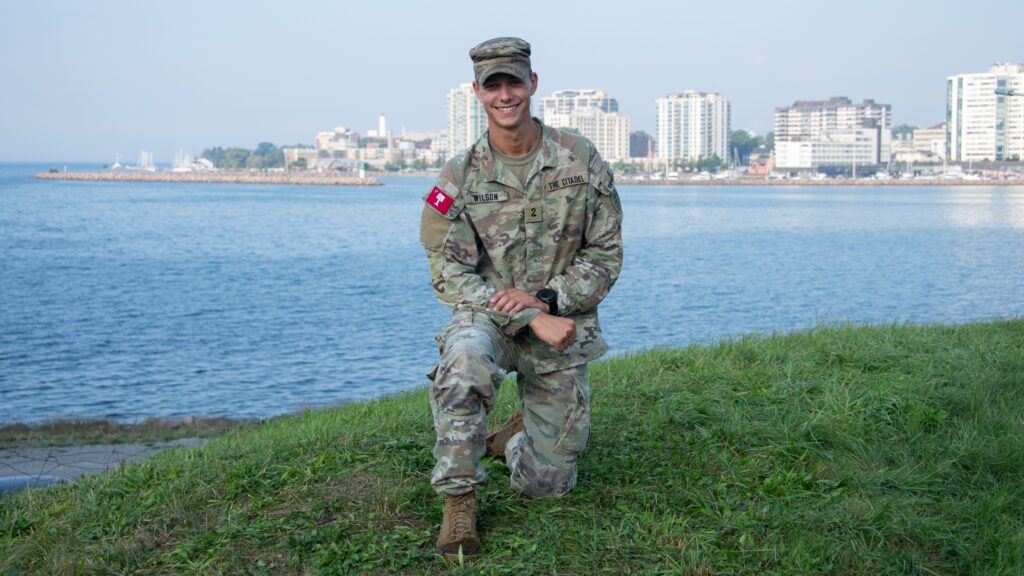
This past November, Citadel veteran student Ashlyn Howard wrote about a Citadel cadet’s time at the Royal Military College of Canada. Howard had spoken with Cadet Sam Wilson on how he got the opportunity, which was made possible through the Killam Fellowship, and what his experience had been while studying abroad.
Now, Wilson gives his own, first-hand perspective on his time at the Royal Military College in several journal-style entries, which he wrote weekly while in Canada. Keep reading to find out more about what his current semester has been like so far from home.
From Big Red to Big Red Maple Leaf: a Citadel cadet in Canada
“Opportunity begets opportunity,” my academic advisor, Lauren Rule Maxwell, Ph.D., in the English department, told me when applying for the Killam Fellowship. The fellowship has been described as a mini-Fulbright, allowing Americans and Canadians to exchange their respective universities to conduct undergraduate research.
However, my research was a little out of the norm — a Comparative Analysis on the Discipline Systems at Military Colleges and Academies. So far, I have been lucky enough to have researched this topic at places like the Royal Military Academy of the Netherlands, West Point and even the Virginia Military Institute. However, Canada has only one military college I was able to attend, the Royal Military College of Canada, or RMC, which was an exchange that has never occurred before.
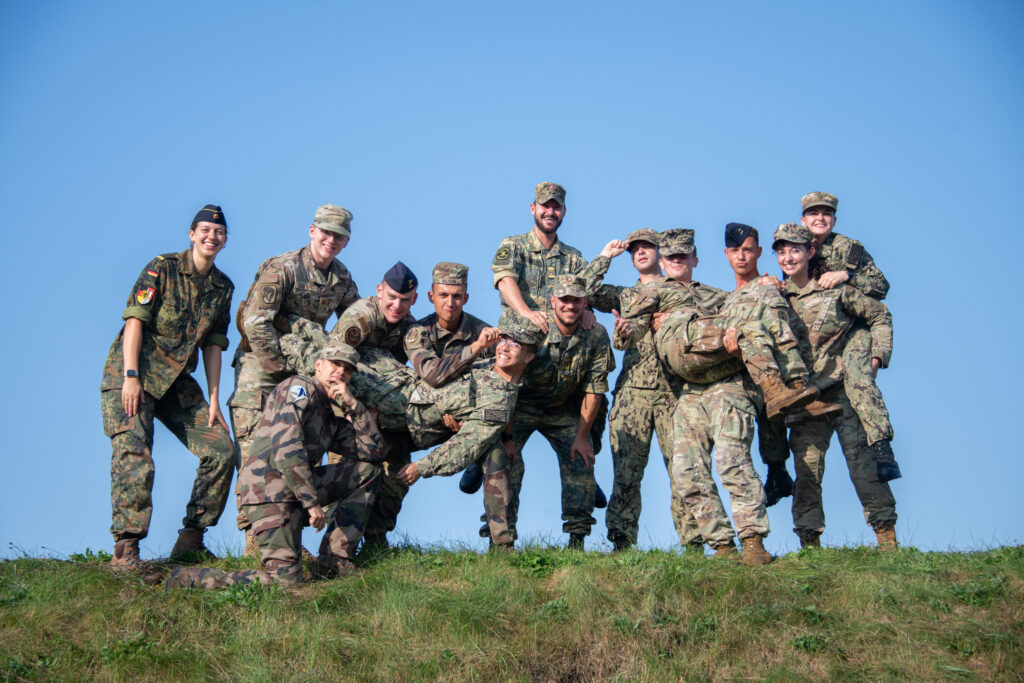
Thanks to a warm welcome from the Canadians and excellent collaboration and support from within The Citadel, I was approved to spend the semester studying abroad at RMC. While the end goal of this research is an academic paper that compares the lessons on discipline and leadership at each institution, I welcome you to follow along my journey in these field notes. Despite being less than 25 miles from the border with the United States, the Canadians at RMC have a completely different view on military structure and discipline.
For example, imagine my surprise when I walked into the mess hall for dinner on the first day and found not a soul in uniform. In fact, everyone was in civilian clothes. While this would result in at least a couple of tours at The Citadel, it is the norm here at RMC. Or take the multiple firsties, Canadian freshman, whom I met with mustaches and dyed hair instead of the classic, shaved head.
While these may seem like drastic and outlandish changes, these regulations are not always what they appear to be. Instead, we must dig deeper and consider these rules historical and social reasonings. Yes, they are different, but they are different for a reason.
So, follow along as I investigate the various parts of cadet life here at the Royal Military College of Canada, everything from the rules and regulations that dictate cadet life to the Indigenous Only Training Flight, or Company. There is no shortage of different experiences here at RMC and lessons that can be applied back at The Citadel.
Does Banff beat the beach?… absolutely

Midterms are a dreaded time for every student. Back in Charleston, it is a cycle of long tests during the days and late nights spent studying. However, things here at the Royal Military College of Canada are slightly different. Combining a short break for Canadian Thanksgiving with a couple of reading days, cadets at RMC had a five-day weekend. Myself and the rest of the international cadets decided to take this chance to go off and see another part of Canada, what some would call the most beautiful part — Banff National Park.
So, one Friday, while my fellow Citadel cadets were preparing for a Friday parade, I was boarding a plane and heading to Calgary, Alberta. Just like The Citadel, RMC is home to cadets nationwide. I asked those cadets from Alberta to give me some tips about traveling to the supposed most beautiful national park in North America.
“Bear spray — you’re going to want bear spray,” was the most universally agreed upon item to bring on the trip. While Banff is a rather large national park, it is still home to 65 grizzly bears, and according to one of the store clerks in Canmore — the town right outside of the national park — it had been a relatively poor berry and fish season, so bears were coming lower into the valley and closer to humans. Luckily, we did not encounter any on our woodland adventures.
But we did encounter some fantastic sights. Our first stop was to one of the more famous parts of the park, Lake Louise. The water in the morning was the closest that I have ever seen water as a mirror. The reflection of the mountains made it like a painting. Then, following a winding trail up the side of the mountain, we came to Lake Agnes, which was much the same, though slightly smaller. The water at that point had turned to a chilling blue, the kind of blue you would expect to see in an ice-cold Gatorade, not a glacial lake.
The next day, we carved our way through a less well-known trek in the park, the trail to Cirque Peak. We started early in the morning, walking up and down small hills in a pine valley, when two horses, Mickey and Dan, trotted past us with their riders. We went about two more miles to where the foliage broke into the rocks of the mountain, and we could catch our first glimpse of the peak. From there, it only got more vertical, to the point where we scrambled from rock to rock, trying not to slip on the loose shale. When we reached the top, though, it was one of the most gorgeous sights I had ever seen. All you could see for miles were the ripples of mountains reaching for the heavens, snow-carpeted glaciers, and deep green valleys split with crystal blue rivers. While the Lowcountry is beautiful, I do have to say Banff… beats the beach.

Clubs and activities at RMC Canada
“Shoulders square, steady breaths and good sight picture,” said the Canadian Sergeant while I lined up my shot.
It was funny how I realized then that no matter how much maple syrup one consumes – whether they are American or Canadian – the fundamentals of shooting are always the same. Over the past couple of months, I have had the opportunity to try out some of the various clubs at the Royal Military College of Canada. On this particular day, I got to send a couple hundred rounds down range with the Combat Weapons Team using the Canadian C7 Rifle.
But this is just the tip of the iceberg when it comes to clubs at the RMC. Even better, many of them have their own initiation or events throughout the semester that they gladly invite international students to. Everything from building rafts and sailing into Lake Ontario on pallets and duct tape with the sailing team to scrambling up cliff sides with the rock climbing club.
RMC is host to almost two dozen clubs, all run by cadets without a staff advisor. While they may not have the Summerall Guards or the Junior Sword Arch, they do have a physical challenge team that competes at the Sandhurst military skills competition at West Point and Exercise Chimitalli, another military skills competition in Mexico.
Nonetheless, they are missing out on one of the best things about clubs, at least at The Citadel — the patches. While cadets at The Citadel treasure their field jacket patches, no matter how much they tell you it’s no big deal, the same is not true of their Canadian counterparts.

However, this is not to say that there is no individualism for the cadets at RMC. In fact, in a barter to bolster recruiting numbers, the Canadian Armed Forces suspended their regulations pertaining to hair dying, tattoos, and, as you may be able to see with my Canadian friend on the Combat Weapons Team, facial hair. While some in the States may be in favor and some may be ardently opposed, it is good to look to our neighbors in the North for ideas. These are Canadian solutions for Canadian problems that may not work at the Military College of South Carolina.
Marching to a different beat: Drill and ceremonies at the RMC
One of the favorite times of the week for every Citadel cadet is parade and parade practice. Standing in the South Carolina sun, covered from head to toe in black and grey wool, is definitely the highlight of the week. But the basis for discipline, the language that every cadet is taught during Challenge Week, drill and ceremonies, also plays a major role at the Royal Military College of Canada.
Earlier this semester, I got to sit in on one of less than a handful of parades carried out by the Canadian Corps of Cadets. This particular parade was the “long grey line” parade for RMC, where the seniors and freshman both parade to show the end of their FYOP, or First Year Orientation Program, which correlates to the cadre period at The Citadel. The flashing red coats, or “maroons” as they are called by the Officer Cadets, are the standard parade uniform.
Nevertheless, the Red Coated Uniforms are not the only thing that signifies Canada’s past with the British Empire. Their style of drill, with arms swinging completely parallel to the deck, their helmets fashioned after those of the late 19th century British forces and their plaque memorializing the place where former Queen Elizabeth stood all signal the strong bond between current cadets and their commonwealth tradition.
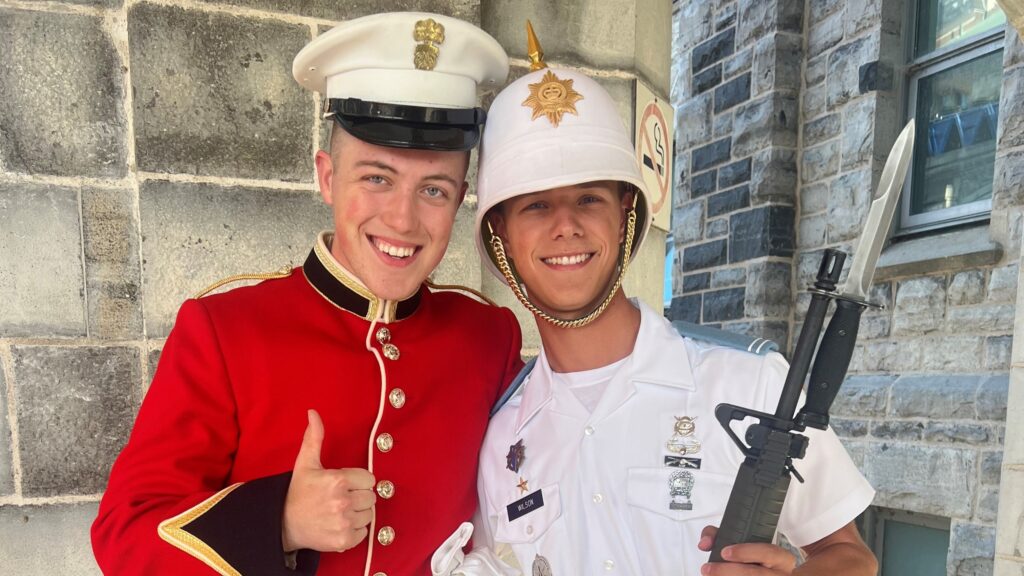
While most Citadel cadets would kill for the opportunity to have only four parades a year, like the Officer Cadets of RMC, I was immediately surprised at how long their parades last. When all was said and done, the Canadian Corps of Cadets was standing at attention for 3 and a half hours on their parade deck, an unenviable task for any cadet. Drill is traditionally the translation of customs and traditions into action; being able to see that applied in Canada has been one of the highlights of my time with the Royal Military College.
Marching through the first year: Contrasting the crucibles of The Citadel and RMC
Smoke bombs, mascots and squadron shirts: The Deputy Commandant of Cadets Challenge is a military event like none other I have experienced. This is meant to be the culminating event for the first-year students at RMC to finish their First Year Orientation Period. While Officer and Naval Cadets are subject to more intensive and standardized military basic training during the summer leading to their first year, FYOP is more focused on adjusting to the college side of RMC.
With squadrons acting as companies at The Citadel, first year cadets are randomly assigned to one of 12 squadrons, with the 13th squadron reserved for indigenous cadets. Each squadron is most easily identifiable with a color and a mascot. For example, my squadron is the 6th squadron, whose color is yellow and whose mascot is a pirate. It is also interesting to note that each squadron contains roughly 80 cadets, 20 for every year. This simple fact also shows how much smaller the Canadian Armed Forces is to the United States. With ROTC and the Academies producing around 6,000 U.S. Army Officers annually, RMC’s average graduating class is about 250 officers — for the entire military.
Nevertheless, The D-Cadets Challenge, as it is informally known, consists of 13 obstacles, one maintained by each squadron and meant to test not only the physical endurance of the cadets but also their capacity for teamwork. From carrying water jugs under a bridge while wearing a gas mask to a trench line memorization game, to say the day was a little intense was no understatement. Moreover, it was also a competition, with the winners being announced later in the day.

It was also the first chance for the friends and family of the cadets to see them since they left for basic training, as well as the whole squadron’s first chance to welcome them to the family. Even though the cadets will continue to have to follow specific rules for the entirety of the year, this was the culmination of their military training and preparation for their upcoming academic training. Being very reminiscent of The Citadel’s Gauntlet on Recognition Day, having it occur so early on comparatively in the cadet’s career while still requiring additional first-year duties may help RMC instill the teamwork ethos before the school year even truly begins. Overall, it was an exciting event, which, while being very similar to what I have seen at The Citadel, remains so different.
Guardians of Memory: Remembrance Day Traditions at RMC Canada
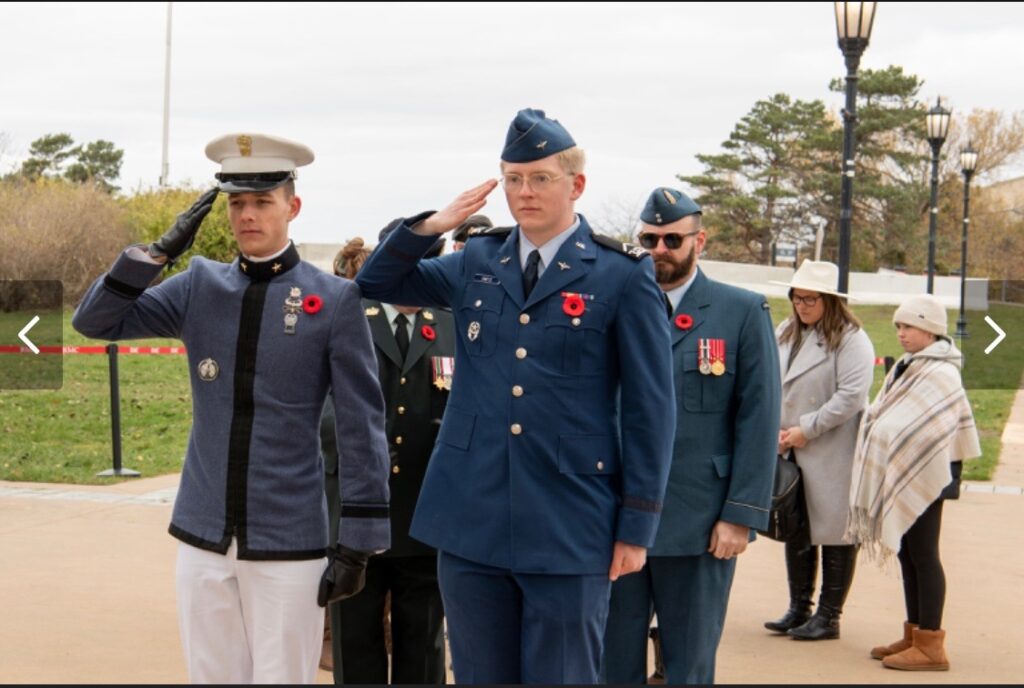
It was at the 11th minute, of the 11th hour, of the 11th day of 1918 that peace came to a world that had been shredded by the first World War. In the United States, we know this day as Veterans Day, one dedicated to those who have served and those currently wearing the uniform. However, in Canada, this day is more akin to our Memorial Day, focusing on those who have given their lives to defend their nation. Nonetheless, this somber celebration of those who gave the ultimate sacrifice varied greatly from the one I see back in the States.
One of the most significant differences I saw was in the lead-up to Remembrance Day. The night before the final Friday in October, a stream of Canadian cadets came into my room to get poppy flower pins from my roommate, who was in charge of their distribution. The next day, I saw them on every uniform at the Royal Military College of Canada. Moreover, when leaving for the weekend, I saw many civilians wearing them too.
As a symbol of Remembrance Day, the poppy comes from a long time ago, with a poem from John McCrae titled ‘In Flanders Fields’. This poem was read aloud in front of one of the most notable landmarks on campus, the Memorial Arch, dedicated to all of the fallen alumni from the first World War. Most striking, however, was the line “The Torch; be yours to hold it high. – If ye break faith with us who die – We shall not sleep, though poppies grow – In Flanders Field.”
One of the most touching parts of the ceremony occurs at the end, when attendees in military dress line up in pairs of two, render a salute to the wreath placed by the Commandant of Cadets, and then attach the poppy that they have been wearing for the last two weeks to it. By the end, the entire wreath looked as though it were woven with strictly poppies. While being a little different than the celebrations back in the States, it was awe-inspiring to see the reverence with which the Canadian public holds their fallen heroes.
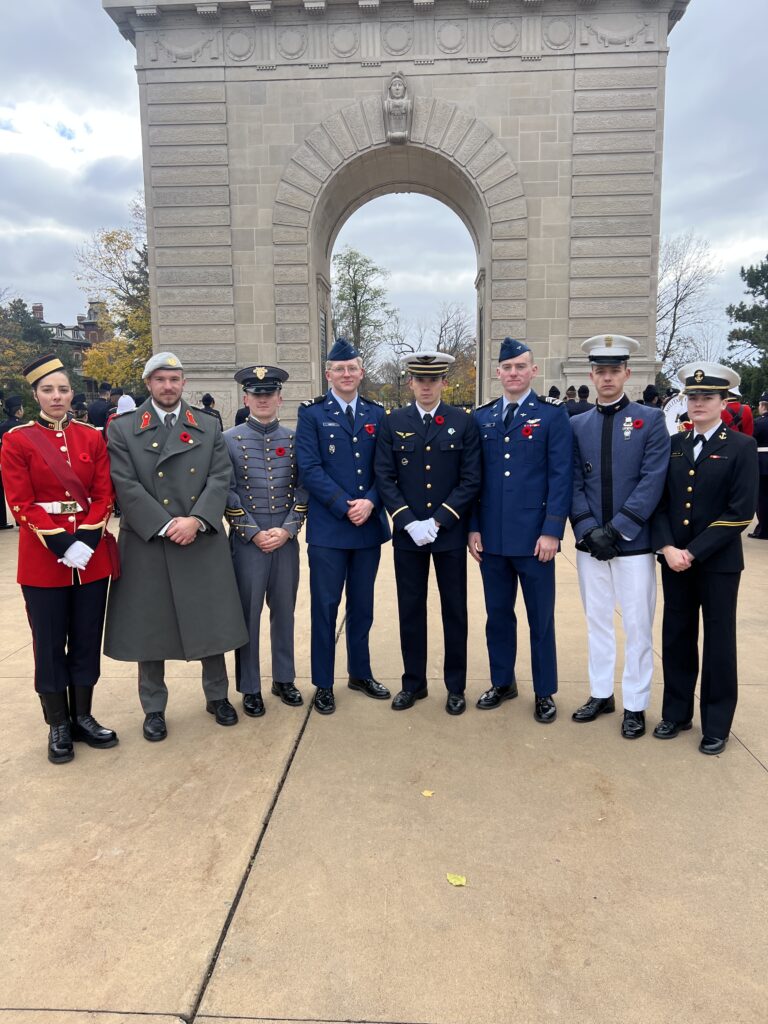
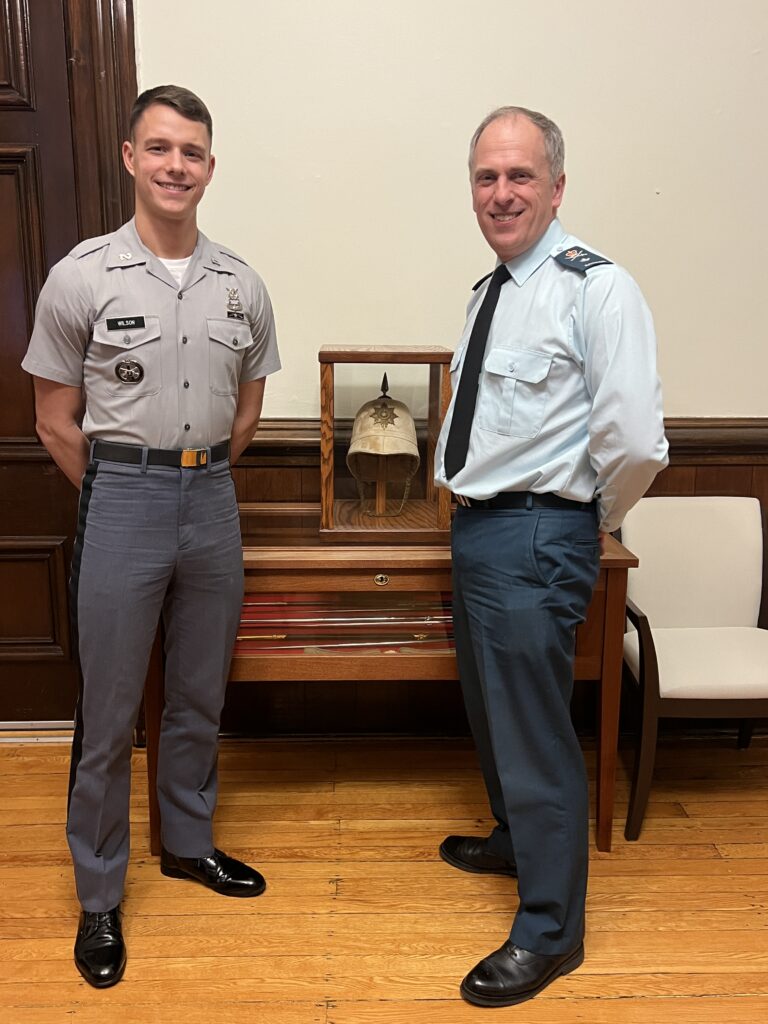

 The Citadel’s Swain Boating Center provides popular event space for Charleston
The Citadel’s Swain Boating Center provides popular event space for Charleston The Citadel Board of Visitors reelects chair
The Citadel Board of Visitors reelects chair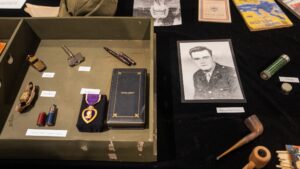 The Citadel Museum honors alumnus killed on D-Day
The Citadel Museum honors alumnus killed on D-Day

